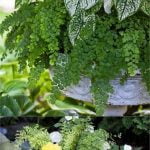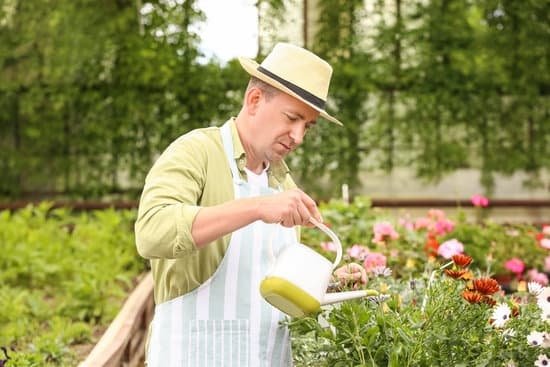Are you looking for backyard container vegetable gardening ideas to make the most of your small outdoor space? Container gardening offers a convenient and accessible way to grow your own vegetables, even in limited areas. In this article, we will explore the benefits and advantages of container gardening in small backyard spaces, as well as provide tips and ideas for selecting the right containers, choosing the best vegetables, and designing a successful backyard vegetable garden.
Container gardening is an ideal solution for individuals with limited outdoor space but who still wish to cultivate their own fresh produce. It allows you to grow a variety of vegetables in containers on patios, balconies, or even small patches of ground. The accessibility of containers also makes it easier to maintain and care for your vegetable garden while optimizing growing conditions. With the right knowledge and preparation, container gardening can yield bountiful harvests right from your own backyard.
In the following sections, we will discuss everything you need to know about backyard container vegetable gardening – from selecting the right containers and choosing the best vegetables to planning and designing your garden layout. We will also provide maintenance and care tips, creative vertical gardening ideas, as well as success stories and inspirational examples from individuals who have successfully grown their own vegetables in small backyard spaces.
Whether you’re a beginner or experienced gardener, this article aims to inspire and guide you in creating your own thriving container vegetable garden.
Selecting the Right Containers for Vegetable Gardening
When it comes to backyard container vegetable gardening ideas, selecting the right containers is crucial for the success of your garden. There are several types of containers suitable for vegetable gardening, including plastic pots, ceramic or terracotta pots, wooden crates, and fabric grow bags. Each type of container has its own advantages and drawbacks, so it’s important to consider the specific needs of your chosen vegetables when making a selection.
In addition to the type of container, size is also an important factor to consider. Larger containers are suitable for deep-rooted vegetables like tomatoes and peppers, while smaller containers will suffice for herbs and leafy greens. It’s essential to choose containers that provide adequate space for the roots to grow and thrive.
Furthermore, proper drainage is vital to prevent waterlogging and root rot. Ensure that your containers have sufficient drainage holes at the bottom to allow excess water to escape.
Lastly, consider the material of the containers. Plastic pots are lightweight and durable, but they can heat up quickly in direct sunlight. Ceramic or terracotta pots are attractive but can be heavy and prone to cracking in freezing temperatures.
Wooden crates are eco-friendly but may deteriorate over time. Fabric grow bags are lightweight and breathable but may require more frequent watering. Consider these factors when choosing containers for your backyard container vegetable garden to ensure the best possible growing conditions for your plants.
Choosing the Best Vegetables for Container Gardening
When it comes to backyard container vegetable gardening ideas, choosing the right vegetables to grow in containers is essential for a successful harvest. Not all vegetables are suitable for container gardening due to their size and space requirements. However, there are plenty of options that thrive in containers and can provide a bountiful harvest with the proper care and attention.
Some of the best vegetables for growing in containers include tomatoes, peppers, lettuce, spinach, radishes, carrots, herbs like basil and cilantro, and even compact varieties of cucumbers and squash. These vegetables are well-suited for container gardening because they don’t require a lot of space to spread out roots or vine. Additionally, they adapt well to the confined environment of a container and can still produce an abundant yield.
When selecting vegetables for your container garden, it’s important to consider the specific requirements of each plant. For example, tomatoes may need staking or support as they grow taller, while lettuce and spinach prefer cooler temperatures and partial shade.
By understanding the needs of each vegetable, you can choose the best combination for your backyard container vegetable garden and ensure a successful growing season. With careful planning and consideration, you can enjoy fresh produce from your own backyard no matter how limited your outdoor space may be.
Essential Tools and Supplies for Container Vegetable Gardening
When it comes to backyard container vegetable gardening ideas, having the right tools and supplies is crucial for success. Whether you are a beginner or an experienced gardener, there are certain essentials that you will need to ensure that your container garden thrives.
First and foremost, having the right containers is essential. When selecting containers for vegetable gardening, it’s important to choose ones that are the appropriate size, material, and have proper drainage. This will ensure that your vegetables have enough space to grow and that excess water can drain out properly. Look for containers made of durable materials such as plastic, ceramic, or even fabric pots.
In addition to containers, you’ll also need the right soil and fertilizer for your vegetable garden. Using high-quality potting mix specifically designed for container gardening will provide your plants with the nutrients they need to thrive. Additionally, choosing a suitable fertilizer will help support healthy plant growth throughout the growing season.
Another essential tool for container vegetable gardening is proper watering equipment. Depending on the size of your garden and the types of containers you are using, you may need a variety of watering tools such as a watering can, hose with a nozzle attachment, or even a drip irrigation system for larger gardens. Proper watering is essential for container gardens since they can dry out more quickly than traditional gardens in the ground.
By ensuring that you have these essential tools and supplies on hand, you’ll be well-equipped to start your own backyard container vegetable garden and set yourself up for success in growing fresh produce at home.
Designing and Planning Your Backyard Vegetable Garden
When it comes to designing and planning your backyard vegetable garden, there are several key considerations to keep in mind. Especially when working with limited space, it’s important to make the most of every inch of your backyard for optimal vegetable growth. Here are some tips and ideas for designing and planning your own backyard container vegetable garden.
Arranging and Organizing Containers
One important aspect of designing a backyard container vegetable garden is deciding how to arrange and organize your containers. Consider the layout of your backyard space and how much sunlight each area receives. Arrange taller plants towards the back or center of the garden to avoid shading smaller plants, and leave enough space between containers for easy access. Additionally, consider utilizing vertical space by using hanging baskets or wall-mounted containers to maximize growing space.
Maximizing Sunlight and Growing Conditions
Since most vegetables require at least 6 hours of sunlight per day, it’s crucial to strategically place your containers in areas that receive adequate sunlight. Take note of any shaded areas in your backyard and plan accordingly, perhaps opting for shade-tolerant vegetables if necessary. In addition to sunlight, consider other growing conditions such as wind exposure and proximity to water sources when arranging your containers.
Utilizing Space-Saving Techniques
In small backyard spaces, it’s essential to make the most of every inch of available space. Consider utilizing creative space-saving techniques such as vertical gardening, trellising for vining plants, or using compact varieties of vegetables that take up less room. Additionally, you can explore DIY projects such as building raised beds or stacked planters to optimize growing space in your backyard container vegetable garden.
By carefully designing and planning your backyard vegetable garden, you can create a productive and beautiful growing space even with limited room. With these tips in mind, you can make the most out of your small backyard by implementing innovative ideas for container gardening while enjoying the convenience and accessibility that comes with growing vegetables in containers.
Maintenance and Care Tips for Container Vegetable Gardens
Maintaining a container vegetable garden requires attention to detail and regular care to ensure the health and productivity of your plants. Watering, fertilizing, pruning, and pest management are essential components of maintaining a successful container garden.
Watering Tips for Container Vegetable Gardens
Proper watering is crucial for the health of your container-grown vegetables. The type of container, climate, and plant species all play a role in determining how often you should water your vegetables. As a general rule, containers tend to dry out more quickly than traditional garden beds, so it’s important to monitor soil moisture regularly. Consider investing in drip irrigation systems or self-watering containers to provide a consistent water supply for your plants.
Fertilizing Techniques for Container Vegetables
Container-grown vegetables rely on you to provide them with the necessary nutrients for healthy growth. Choose a high-quality organic fertilizer specifically formulated for vegetables and apply it according to the instructions on the package. Consider using slow-release fertilizers or liquid fertilizers that can be mixed with water for easy application. Regular fertilization will help ensure that your plants have the nutrients they need to produce a bountiful harvest.
Pest and Disease Management
Container gardens are not immune to pests and diseases, so it’s important to stay vigilant and take preventive measures to protect your vegetables. Keep an eye out for common pests such as aphids, spider mites, and cabbage worms, as well as signs of disease such as powdery mildew or blight.
Consider using natural remedies like insecticidal soaps or neem oil to control pests, and practice good hygiene by removing any diseased foliage promptly. By staying proactive, you can effectively manage pests and diseases in your container vegetable garden.
By following these maintenance and care tips for your backyard container vegetable garden, you can enjoy a thriving harvest of fresh produce right outside your door. With proper watering, fertilizing, and pest management strategies in place, you’ll be well-equipped to nurture healthy and productive container-grown vegetables throughout the growing season.
Creative and Space-Saving Vertical Container Gardening Ideas
Vertical gardening is a fantastic solution for those with limited space in their backyard. This technique allows you to grow a variety of vegetables and herbs by utilizing vertical surfaces such as walls, fences, or even hanging containers. Here are some creative and space-saving vertical container gardening ideas to help you make the most out of your small backyard:
- Vertical Trellises: Install trellises against a wall or fence to support climbing plants like tomatoes, cucumbers, or pole beans. This not only maximizes space but also adds a visually appealing element to your garden.
- Hanging Baskets: Hang baskets from sturdy hooks or brackets to grow herbs, lettuce, or strawberries. This not only saves ground space but also allows for easy access and maintenance.
- Wall-mounted Planters: Use wall-mounted planters to create a living wall of leafy greens, flowers, or even compact root vegetables like radishes. These planters can be purchased or easily DIY-ed using recycled materials.
- Tiered Plant Stands: Invest in tiered plant stands or shelving units to create multiple levels for growing a variety of plants. This is an efficient way to make use of vertical space on patios or balconies as well.
By implementing these creative ideas for vertical container gardening, you can transform your small backyard into a productive and beautiful oasis filled with fresh produce and vibrant greenery. With the right setup and care, vertical gardens can thrive and provide bountiful harvests throughout the growing season.
Whether you are just starting out with your backyard container vegetable garden or looking to expand your gardening skills, these space-saving vertical gardening ideas offer a practical and innovative approach to maximizing your planting area while adding visual interest to your outdoor space.
Success Stories and Inspirational Ideas for Backyard Container Vegetable Gardening
When it comes to backyard container vegetable gardening ideas, there are numerous success stories and inspirational ideas that can serve as a source of motivation for beginners. Many individuals have found creative solutions for growing vegetables in small backyard spaces, proving that it is possible to have a productive and beautiful garden even with limited area.
One inspiring success story comes from Jane, who transformed her urban balcony into a flourishing vegetable garden. By utilizing vertical space with hanging planters and trellises, she was able to grow a variety of vegetables such as tomatoes, peppers, and herbs. Jane’s innovative approach showcases the potential for maximizing space in small backyards through vertical container gardening.
Another example of a successful container vegetable garden is Mark’s backyard oasis. Despite having a compact outdoor area, Mark designed his vegetable garden using a combination of raised beds and strategically placed containers. This not only allowed him to grow an abundance of produce but also created an aesthetically pleasing garden space.
In addition to these success stories, there are numerous inspirational ideas for backyard container vegetable gardening. From repurposing old containers and creating DIY vertical gardens to incorporating colorful plants and flowers alongside vegetables, the possibilities are endless. These creative ideas demonstrate that with some planning and imagination, anyone can create a thriving vegetable garden in their backyard using containers.
Conclusion and Next Steps
In conclusion, backyard container vegetable gardening offers a multitude of benefits for individuals with limited outdoor space. The convenience and accessibility of growing vegetables in containers make it an attractive option for urban dwellers, apartment residents, or anyone with a small backyard. By selecting the right containers, choosing suitable vegetables, and utilizing space-saving techniques like vertical gardening, anyone can enjoy the rewards of growing their own fresh produce right at home.
As you embark on your journey into backyard container vegetable gardening, it’s essential to remember that success requires careful planning and maintenance. From selecting the appropriate containers and vegetables to arranging them effectively in your backyard space, every step plays a crucial role in maximizing your garden’s potential. Additionally, regularly tending to your plants by providing adequate water, fertilizer, and pest control will ensure a bountiful harvest.
For those interested in diving deeper into the world of backyard container vegetable gardening ideas, there are numerous resources available for further reading and inspiration. Whether it’s books on container gardening techniques or online forums dedicated to sharing innovative ideas and success stories, there is no shortage of valuable information out there. With the right knowledge and enthusiasm, you can turn your small backyard into a thriving oasis of fresh vegetables and culinary delights. Happy gardening.
Frequently Asked Questions
What Is the Best Vegetable to Grow in a Container?
The best vegetable to grow in a container is generally one that doesn’t require a lot of space, like lettuce, spinach, or cherry tomatoes. These vegetables can thrive in the confined environment of a container and still produce a good yield.
What Is the Most Efficient Vegetable Garden Layout?
The most efficient vegetable garden layout depends on factors such as the size of the space available, the climate, and the types of vegetables being grown. However, a popular and efficient layout is the raised bed system, which maximizes growing space and makes it easier to manage and maintain the garden.
How Many Vegetables Can I Grow in a 5 Gallon Container?
In a 5-gallon container, it’s possible to grow one or two small vegetable plants such as peppers, eggplants, or dwarf varieties of tomatoes or cucumbers. It’s important to ensure that the container has proper drainage and enough soil depth for the vegetables to thrive.

Welcome to my gardening blog! I am passionate about plants and enjoy sharing my knowledge and experiences with others. In this blog, I will write about everything related to gardening, from tips on how to get started to updates on my own garden projects.





